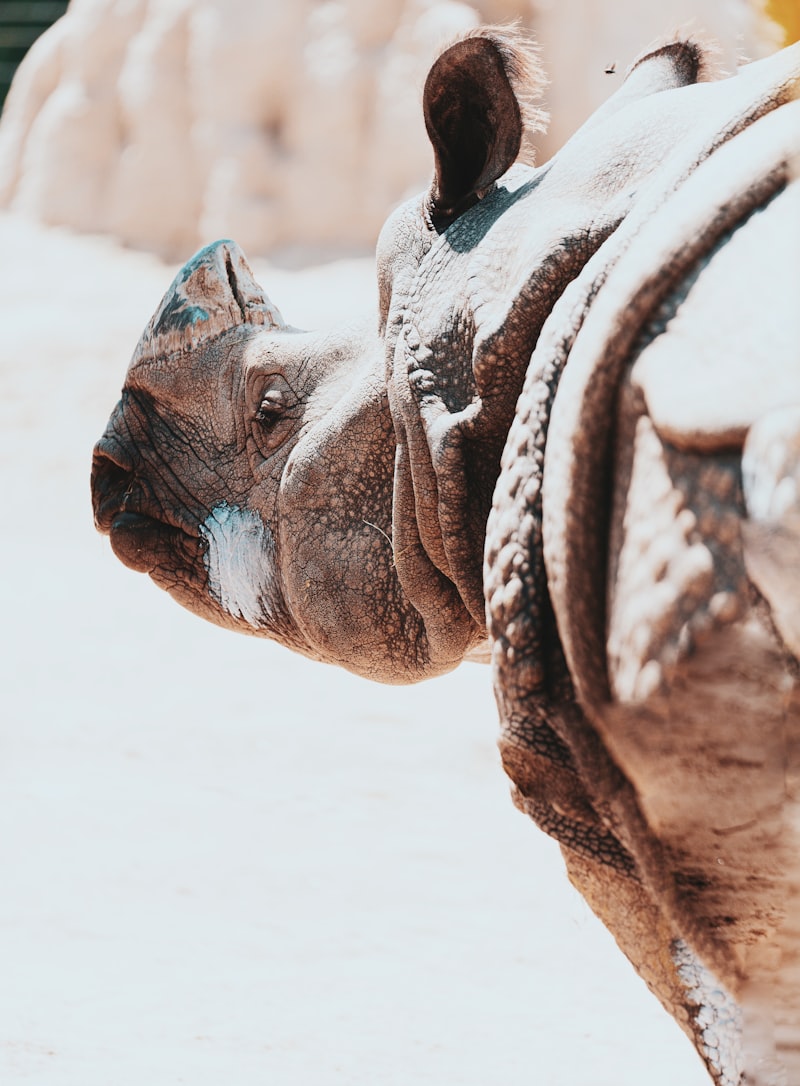Have you ever stopped to think about the majestic creatures that roam our planet? From the gentle giant panda to the elusive snow leopard, many species face the threat of extinction today. The term “endangered species” refers to animals or plants that are at risk of disappearing forever. It’s a stark reality that demands our attention and action.
But how can ordinary individuals like you and me make a difference in the face of such a monumental challenge? The good news is, there are several meaningful ways we can contribute to the conservation and protection of endangered species.
Firstly, raising awareness is key. Many people are unaware of the plight of endangered species and the factors driving their decline. By sharing information through social media, conversations with friends and family, or even volunteering at local wildlife organizations, you can help spread the word and inspire others to take action.
Secondly, supporting conservation efforts financially can have a significant impact. Many organizations dedicated to protecting endangered species rely on donations to fund research, habitat restoration, and anti-poaching initiatives. Every dollar contributed goes a long way in safeguarding these vulnerable species and their habitats.
Another powerful way to make a difference is by making sustainable choices in your daily life. This includes opting for sustainably sourced products, reducing single-use plastics, and supporting businesses that prioritize environmental conservation. By adopting eco-friendly practices, you help reduce the demand for resources that threaten wildlife habitats.
Furthermore, advocating for stronger environmental policies and regulations is crucial. Governments play a vital role in protecting endangered species through legislation, protected areas, and enforcement of wildlife trafficking laws. By voicing your support for policies that prioritize conservation, you can influence decision-makers to take meaningful action.
Lastly, getting involved in local conservation projects or volunteering your time can make a direct impact in your community. Whether it’s participating in wildlife surveys, planting native plants, or joining beach clean-ups, every effort contributes to creating a safer environment for endangered species.
While the challenges facing endangered species may seem daunting, each of us has the power to make a difference. By raising awareness, supporting conservation efforts, making sustainable choices, advocating for policy change, and getting involved locally, we can collectively work towards ensuring a future where endangered species thrive alongside us.
Saving Wildlife: Practical Steps to Support Endangered Species
Firstly, a key action you can take is to reduce your carbon footprint. Climate change poses a significant threat to wildlife habitats worldwide. By cutting down on energy consumption, using public transportation, or even opting for energy-efficient appliances, you’re helping reduce the demand for fossil fuels, which in turn supports the conservation of habitats crucial for endangered species.
Another crucial step is raising awareness. Sometimes, the simple act of spreading knowledge can have profound effects. Share information about endangered species on social media, talk to friends and family about conservation efforts, or even volunteer at local wildlife organizations to educate others. The more people understand the importance of preserving biodiversity, the greater our collective impact can be.
Supporting conservation organizations financially or through volunteering is another effective way to make a difference. Many organizations work tirelessly to protect endangered species through initiatives such as habitat restoration, captive breeding programs, and anti-poaching efforts. Your contributions, whether big or small, can directly support these vital projects.
In your own community, consider creating wildlife-friendly spaces. Plant native species in your garden to provide food and shelter for local wildlife. Avoid using pesticides and herbicides that can harm animals and their habitats. Even small urban gardens can become havens for bees, butterflies, and birds.
Lastly, advocate for stronger environmental policies. Support legislation that protects endangered species and their habitats. Write to your local representatives, sign petitions, and participate in public consultations. Your voice matters in shaping policies that can have far-reaching effects on wildlife conservation.

By taking these practical steps, each of us can play a role in safeguarding endangered species and preserving biodiversity for future generations. Together, we can make a difference in the survival of our planet’s most vulnerable inhabitants.
Empowering Conservation: Ways Individuals Can Aid Endangered Species
Conservation of endangered species is a pressing global issue that requires collective effort. As individuals, we have the power to make a significant impact through simple yet effective actions. One of the most crucial steps in aiding endangered species is raising awareness. By spreading knowledge about endangered species and their habitats, we can inspire others to join the cause.
Another powerful way to support conservation efforts is by reducing our carbon footprint. Climate change is a major threat to wildlife, affecting habitats and food sources. By reducing energy consumption, using sustainable products, and advocating for renewable energy, we can help mitigate these effects and protect vulnerable species.
Supporting conservation organizations financially or through volunteer work is also invaluable. Many organizations work tirelessly to protect endangered species through research, habitat restoration, and advocacy. By donating or volunteering our time, we contribute directly to these efforts and help ensure a future for endangered wildlife.
Taking action in our own communities is another impactful way to aid conservation. Planting native species, creating wildlife-friendly gardens, and participating in local conservation initiatives can provide crucial habitats and support for endangered species right in our own backyards.
Educating ourselves about wildlife conservation issues and supporting policies that protect endangered species is essential. By staying informed and advocating for stronger environmental protections, we can influence decision-makers and enact meaningful change.
Every individual effort counts in the fight to protect endangered species. By taking these steps and encouraging others to do the same, we can collectively make a difference and empower conservation efforts worldwide. Together, we can ensure that future generations have the privilege of experiencing the beauty and diversity of our planet’s wildlife.
From Awareness to Action: Your Role in Protecting Endangered Species
Why should you care? Each species plays a unique role in its ecosystem, contributing to the delicate balance of nature. From pollinating plants to maintaining food chains, these creatures are essential to our own survival. When we lose a species, we disrupt these interconnected relationships, leading to potential cascading effects on the environment.
The journey from awareness to action begins with understanding. Educating yourself about endangered species, their habitats, and the threats they face is the first step. It’s about realizing that our actions, whether big or small, have consequences. From deforestation and habitat destruction to climate change and illegal wildlife trade, human activities are primary drivers of species decline.
But awareness alone isn’t enough. It’s about taking meaningful steps to make a difference. This could mean supporting conservation organizations, volunteering for wildlife monitoring programs, or advocating for stronger environmental policies. Even simple everyday choices like reducing plastic use or supporting sustainable products can have a positive impact.
Think of yourself as a guardian of these vulnerable species. Just as a shepherd protects the flock, your actions can help protect endangered wildlife. Every effort counts, whether it’s raising awareness in your community, donating to conservation projects, or participating in citizen science initiatives.
The fate of endangered species lies in our hands. By transforming awareness into action, we can ensure that future generations inherit a world rich in biodiversity. Together, let’s step up to protect and preserve these incredible creatures for the benefit of all life on Earth.
Community Conservation Efforts: Joining Forces to Save Endangered Wildlife
In today’s world, the plight of endangered wildlife has become increasingly urgent. Species across the globe face threats ranging from habitat loss to poaching, pushing them to the brink of extinction. However, amidst these challenges, community conservation efforts stand out as beacons of hope. These initiatives, driven by local communities and conservation groups, play a crucial role in safeguarding vulnerable species.

Imagine a scenario where villagers in a remote African savanna come together to protect the last remaining herd of rhinos. Through vigilant monitoring and anti-poaching patrols, they create a shield of protection around these majestic creatures. Each member of the community becomes a guardian, not just of the rhinos, but of their entire ecosystem.
Similarly, in the lush rainforests of South America, indigenous tribes collaborate with conservationists to preserve rare bird species. By preserving large tracts of forest and practicing sustainable hunting, they ensure that these birds continue to grace the canopy with their vibrant plumage and melodious calls.
But conservation isn’t just about protecting specific species; it’s about nurturing entire ecosystems. Along the coasts of Southeast Asia, coastal communities work tirelessly to safeguard sea turtle nesting grounds. By establishing protected areas and educating locals about the importance of marine biodiversity, they ensure that future generations can witness the magical sight of hatchlings making their journey to the sea.
These community-driven efforts not only protect wildlife but also empower local people. By involving communities in conservation initiatives, we foster a sense of stewardship and pride in their natural heritage. This shared responsibility strengthens the fabric of society, ensuring that conservation becomes a collective goal rather than a distant ideal.
Effective Strategies for Preserving Endangered Species in Your Area
One impactful way to support local wildlife is by creating a habitat in your garden that mimics the natural environment preferred by endangered species. This can include planting native plants that provide food and shelter, such as milkweed for monarch butterflies or native grasses for birds like the northern bobwhite. By doing so, you’re not just beautifying your garden but also providing a safe haven for endangered species to thrive.
Another crucial strategy is raising awareness within your community. Many people may not realize the threats faced by local endangered species or the simple actions they can take to help. Consider organizing educational events or workshops, or even just starting conversations with your neighbors about the importance of conservation. Awareness leads to action, and collective efforts can have a significant impact on protecting wildlife.
Supporting local conservation efforts and organizations is also key. These groups often work tirelessly to preserve habitats, conduct research, and advocate for policies that benefit endangered species. Whether through donations, volunteering your time, or participating in local conservation projects, every contribution counts towards safeguarding vulnerable wildlife populations.
Additionally, practicing responsible pet ownership is crucial. Pets can unintentionally harm local wildlife, especially if they are allowed to roam freely outdoors. Keeping cats indoors, using wildlife-friendly fencing, and ensuring proper waste disposal are simple steps that can prevent harm to endangered species in your area.
Lastly, advocating for environmentally friendly practices in your daily life contributes to broader conservation efforts. From reducing single-use plastics to supporting sustainable agriculture, these actions help protect habitats and reduce the overall impact on endangered species.
By implementing these strategies, you can play a significant role in preserving endangered species right where you live. Together, we can make a difference and ensure a future where these magnificent creatures continue to thrive in their natural habitats.
Frequently Asked Questions
How can individual actions make a difference for endangered species
Learn how your individual actions can directly impact endangered species and contribute to their conservation efforts.
What are endangered species and why are they important
Learn about endangered species and their importance. Understand why conservation efforts are crucial to preserving biodiversity and ecosystems. Discover how these species contribute to ecological balance and human well-being.
How can education and advocacy contribute to saving endangered species
Learn how education and advocacy efforts play crucial roles in the conservation of endangered species. Discover how raising awareness and promoting sustainable practices can help protect biodiversity and habitats worldwide.
What are some practical ways to support endangered species conservation
Discover practical methods to aid endangered species conservation with our concise FAQ guide. Learn how habitat preservation, sustainable practices, and community involvement play pivotal roles in safeguarding vulnerable wildlife populations.
Why is habitat preservation crucial for protecting endangered species
Habitat preservation is essential for protecting endangered species because it safeguards the natural environments where these species live and thrive. By preserving habitats, we ensure that endangered species have access to food, shelter, and breeding grounds necessary for their survival. Without intact habitats, these species face increased risks of extinction due to habitat loss and fragmentation.


